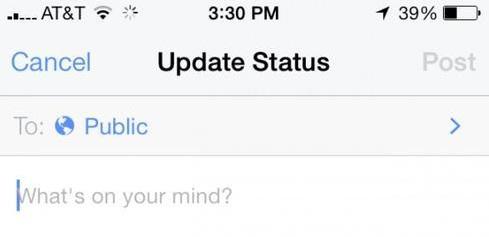Facebook's privacy makeover continues with changes designed to make your account easier to manage. And have you met the privacy dinosaur?
5/24/2014
08:11 AM
08:11 AM

Facebook users have complained for years that the social network's privacy settings are too confusing. For the most part, the company has done little to make them easier to understand -- until recently. Amid increased government regulation and a desire to keep Facebook's user base strong, it appears Mark Zuckerberg and company have had a change of heart.
This week, the social network announced another handful of privacy updates and changes to help you more easily manage your account.
"While some people want to post to everyone, others have told us that they are more comfortable sharing with a smaller group, like just their friends," Facebook wrote in a blog post. "We recognize that it is much worse for someone to accidentally share with everyone when they actually meant to share just with friends, compared with the reverse."
[Get a grip on your account. Read 10 Most Misunderstood Facebook Privacy Facts.]
In the past month, Facebook has tested and launched a number of new privacy features -- from additional photo settings to new pop-up alerts if you're about to post publicly. Here's a rundown of Facebook's six most recent privacy changes and what they mean for your account.
1. Additional photo settings
Your current profile photo and cover photos have traditionally been public by default. Soon, Facebook will let you change the privacy setting of your old cover photos -- a capability it is gradually rolling out to all users. (Facebook already lets you change the privacy settings of your former profile photos.)
Your current profile photo and cover photos have traditionally been public by default. Soon, Facebook will let you change the privacy setting of your old cover photos -- a capability it is gradually rolling out to all users. (Facebook already lets you change the privacy settings of your former profile photos.)
When you receive the update, navigate to your photo albums homepage and open the one titled Cover Photos. To change the audience of a photo, click it, and then hover over the icon next to the date. Choose your new privacy setting for the photo from the dropdown menu.
2. More visible mobile sharing settings
When posting to Facebook via a mobile device, Facebook's audience selector has been hidden behind an icon that corresponds with your privacy setting -- a globe if you post publicly, a two-person silhouette to share with friends, and a lock symbol if the post is private, for example.
When posting to Facebook via a mobile device, Facebook's audience selector has been hidden behind an icon that corresponds with your privacy setting -- a globe if you post publicly, a two-person silhouette to share with friends, and a lock symbol if the post is private, for example.
Facebook will move the audience selector to the top of the update status box in a new "To:" field similar to what you see when you compose an email. This change makes it easier to see who you're about to share something with, which can help prevent unintended sharing.
3. Default settings for new users
In the past, when new users joined Facebook, the social network usually set the audience of their posts automatically to public. This left it up to them to change it if they wanted more control. Moving forward, Facebook will
Kristin Burnham currently serves as InformationWeek.com's Senior Editor, covering social media, social business, IT leadership and IT careers. Prior to joining InformationWeek in July 2013, she served in a number of roles at CIO magazine and CIO.com, most recently as senior ... View Full BioIn the past, when new users joined Facebook, the social network usually set the audience of their posts automatically to public. This left it up to them to change it if they wanted more control. Moving forward, Facebook will




No comments:
Post a Comment